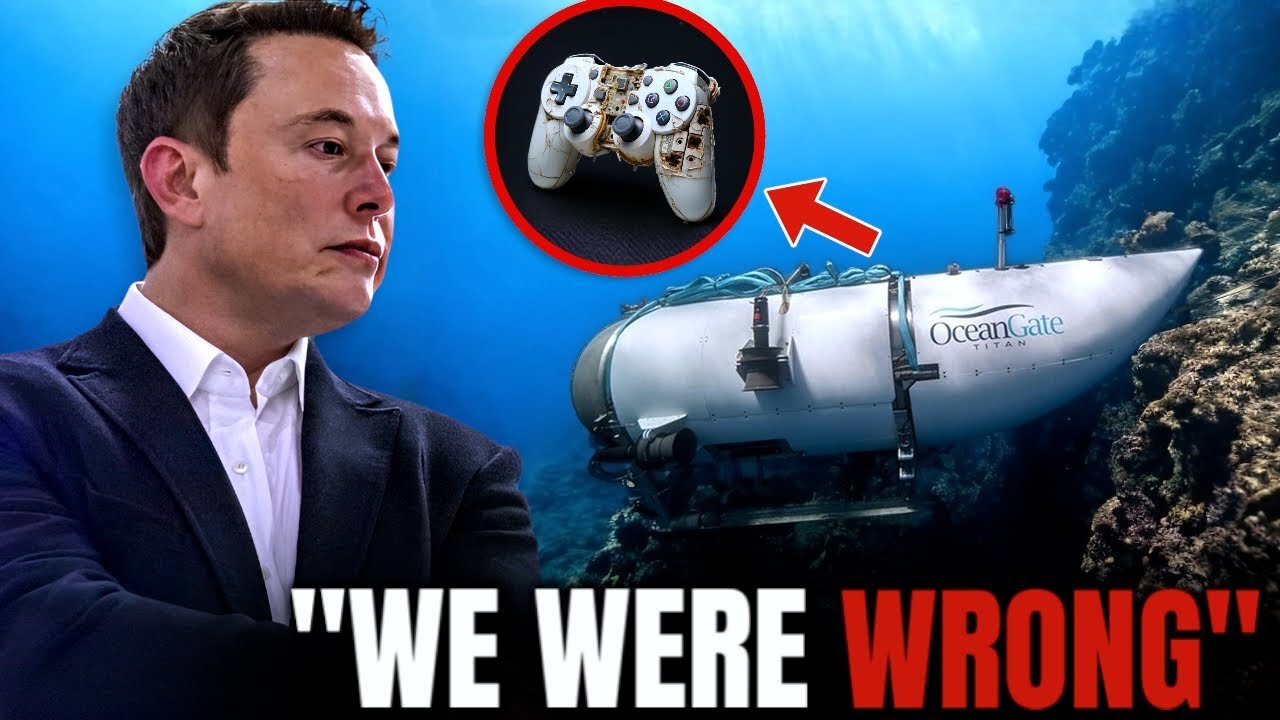Premium Only Content

Elon Musk JUST REPORTED What REALLY Happened To The Oceangate Titan!
Elon Musk JUST REPORTED What REALLY Happened To The Oceangate Titan!
June 18th marked a big day in the realm of deep-sea tourism, as the OceanGate submarine named Titan embarked on its third dive, descending to a staggering depth of over 10,000 feet in the North Atlantic. Its mission: to transport five daring passengers to witness the haunting wreckage of the infamous Titanic. However, after one hour and forty-five minutes, all communication with the sub ceased, leaving it missing in the depths of the ocean. Despite extensive efforts by the US and Canadian coast guards, the Titan remained elusive. Finally, on June 22nd, fragments of the 23,000-pound submersible surfaced off the coast of Newfoundland, confirming fears that the vessel had imploded, and tragically, all humans on board had perished. How could such a catastrophe occur? What went wrong in the depths of the ocean?
A Quest for the Depths: Ever since James Cameron's iconic exploration of the Titanic's wreckage, there has been a lingering fascination among the elite to tour the haunting remnants of the ocean liner. In response to this demand, specializing in deep-sea tourism, arose in 2009. Their most audacious expedition promiOceanGate, a private US companysed to transport intrepid explorers to the chilling grave of the Titanic, and the Titan served as their pioneering vessel. With two previous successful dives to its credit, the Titan aimed to carry a crew of five passengers on its third expedition. Among the fortunate five were British businessman Hamish Harding, Pakistani investor Shahzada Dawood and his son Suleman, French diver Paul-Henri Nargeolet, and OceanGate CEO Stockton Rush.
The Titanic's Ill-Fated Legacy: The Titanic, a steamship that met a tragic demise on April 14, 1912, stands as one of the most infamous marine disasters of the 20th century. Its encounter with an iceberg resulted in a catastrophic breach, leading to its sinking in the frigid waters of the North Atlantic near Newfoundland. Over 1,500 lives were lost to drowning and hypothermia, as timely rescue efforts were not forthcoming. Today, the wreckage rests 12,500 feet below the ocean's surface, preserving a chilling reminder of human hubris. Only a handful, including James Cameron himself, have had the privilege of exploring the Titanic's haunting remains using his custom-designed submersible, "the Deep Sea Challenger."
The Titan: The Titan emerged as a remarkable submersible, equipped to brave extreme depths and offer deep-sea tourists an extraordinary glimpse into the Titanic's enigmatic world. Having successfully completed two trips to the wreckage in 2021 and 2022, the Titan carried the hopes and dreams of its passengers on its ill-fated third expedition. However, disconcertingly, past passengers had expressed dissatisfaction with their experiences, highlighting alarming safety concerns, communication failures, and design flaws. One wonders why the company continued these trips, despite the potential risks involved.
Weighing the Risks: Brian Weed, a camera operator for the Discovery Channel and a passenger on the Titan's inaugural dive, described the experience as harrowing, evoking a sense of vulnerability akin to "sitting ducks." The 21-foot submersible, weighing a colossal 10,432 kg, was constructed from carbon fiber titanium, providing durability while maintaining a relatively low weight. However, the absence of seats and the presence of a curtained-off area serving as a makeshift bathroom created less-than-ideal conditions for the crew. Nonetheless, the allure of embarking on a once-in-a-lifetime adventure overshadowed any concerns about comfort and safety.
The Titan's impressive technological features included an inertial navigation system (INS), an ultra-short baseline acoustic positioning system, a robotics laser scanner, and a Teledyne 2D sonar, among others. Astonishingly, even NASA lent its expertise to the construction of the Titan, contributing invaluable insights into the design and automated fiber placement layup of composite hulls. CEO Stockton Rush, one of the ill-fated individuals aboard the sub, praised the collaboration with NASA, emphasizing how the aerospace-grade carbon fiber hull reduced the sub's weight, allowing for a larger payload capacity of up to five crew members, a pilot, researchers, and mission specialists. However, one design flaw stood out—an unconventional cylinder-shaped cabin, deviating from the conventional sphere-shaped design of most submersibles. The use of external bolts to seal the submersible further raised questions, as it required external assistance to open the vessel from the outside. This meant that, in the event of a malfunction, the crew inside had no chance of escape, making their fate tragically inevitable.
-
 20:57
20:57
Elon Musk Daily
6 days agoElon Musk Just REVEALED Why The $50 Billion Nicaragua Canal Will FINISH The Panama Canal!
1801 -
 12:03
12:03
Space Ice
12 hours agoSteven Seagal's China Salesman - Mike Tyson Knocks Him Out - Worst Movie Ever
26.9K14 -
 11:37
11:37
Degenerate Jay
11 hours ago $2.41 earnedJames Bond Needs Quality Over Quantity From Amazon
38.4K3 -
 15:23
15:23
Misha Petrov
12 hours agoTrad Wives & Girl Bosses Go to WAR!
38.6K42 -
 2:03:11
2:03:11
TheDozenPodcast
10 hours agoFootball villain fighting the state: Joey Barton
33.9K1 -
 LIVE
LIVE
Scottish Viking Gaming
13 hours ago💚Rumble :|: Sunday Funday :|: Smash the Blerps and Vape the Terpes
393 watching -
 1:45:00
1:45:00
RG_GerkClan
15 hours ago🔴LIVE Sunday Special - It's Time for World Domination - Civilization VII - Gerk Clan
76.2K27 -
 LIVE
LIVE
Major League Fishing
4 days agoLIVE Tackle Warehouse Invitationals, Stop 1, Day 3
140 watching -
 23:34
23:34
marcushouse
15 hours ago $15.61 earnedBREAKING: Starship Launch IMMINENT – But What’s This SURPRISE Flight 9 Plan?! 🚀🔥
116K15 -
 8:43
8:43
Film Threat
1 day agoTHE MONKEY | Film Threat Reviews
104K3